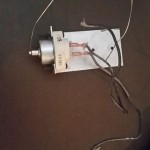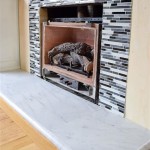Outdoor Living Spaces Enhanced by Fireplaces
The integration of fireplaces into outdoor living spaces has experienced a significant surge in popularity, transforming patios, decks, and yards into year-round havens for relaxation and entertainment. These outdoor fireplaces are no longer mere functional heating elements; they have evolved into architectural focal points, enhancing the aesthetic appeal and functionality of outdoor environments. The presence of a fireplace adds warmth, ambiance, and a sense of gathering, extending the usability of outdoor spaces beyond the traditional summer months.
The concept of outdoor living has gained momentum as homeowners seek to maximize their property's potential and create seamless transitions between indoor and outdoor environments. Outdoor fireplaces are integral to this trend, providing a central gathering point for family and friends, fostering a sense of community and creating memorable experiences. The design possibilities are vast, ranging from rustic stone fireplaces to sleek, modern designs, allowing homeowners to tailor their outdoor space to their individual style and preferences.
Selecting the appropriate outdoor fireplace requires careful consideration of several factors, including the available space, desired aesthetic, budget, and local building codes. Various types of fireplaces are available, each with its own benefits and drawbacks. Wood-burning fireplaces offer the traditional crackling fire experience, while gas fireplaces provide convenience and ease of use. Electric fireplaces and fire pits offer further alternatives, each catering to specific needs and preferences. Moreover, the materials used in construction can greatly impact the overall look and durability of the fireplace, influencing its longevity and maintenance requirements.
Key Considerations for Designing an Outdoor Fireplace
Designing an outdoor fireplace involves a multi-faceted approach, considering not only the aesthetic appeal but also functionality and safety. Careful planning ensures the fireplace integrates seamlessly with the surrounding landscape and meets the homeowner's specific needs.
Firstly, determining the appropriate location for the fireplace is crucial. Factors such as prevailing winds, proximity to structures, and available space must be considered. Positioning the fireplace in a sheltered area can minimize the impact of wind and prevent smoke from blowing into living areas. Adequate clearance from combustible materials, such as trees and fences, is essential to prevent fire hazards. Furthermore, the location should consider the overall flow of the outdoor space, ensuring easy access and convenient seating arrangements.
Secondly, selecting the right type of fireplace is paramount. Wood-burning fireplaces provide a traditional ambiance and the satisfying aroma of burning wood. However, they require a chimney or flue for proper ventilation and generate smoke and ash. Gas fireplaces offer a more convenient option, with instant ignition and adjustable flame height. They require a gas line connection and may necessitate professional installation. Electric fireplaces are the easiest to install, requiring only a power outlet. However, they lack the visual appeal of a real flame. Fire pits offer a less formal option, providing a central gathering point for warmth and conversation. They come in various shapes and sizes and can be fueled by wood, gas, or propane.
Thirdly, the material selection plays a vital role in the aesthetic appeal and durability of the fireplace. Natural stone, such as granite, limestone, and fieldstone, provides a rustic and timeless look. Brick offers a classic and durable option, available in various colors and textures. Concrete is a versatile material that can be molded into various shapes and finishes. Metal, such as stainless steel and copper, provides a modern and sleek aesthetic. The choice of materials should complement the surrounding landscape and architectural style of the home. Furthermore, the materials should be weather-resistant and able to withstand the elements.
Types of Outdoor Fireplaces and Their Features
The diversity in outdoor fireplaces allows homeowners to select an option that best suits their individual needs and aesthetic preferences. Each type offers unique features and benefits, making it essential to understand the differences before making a selection.
Wood-burning fireplaces are the traditional choice, providing the authentic ambiance of a crackling fire and the aroma of burning wood. They necessitate a chimney or flue for proper ventilation to safely exhaust smoke and combustion byproducts. Wood-burning fireplaces offer a high heat output, making them suitable for colder climates. However, they require a consistent supply of wood and involve the task of ash removal and maintenance. Building and tending the fire adds to the overall experience for some, while it poses an inconvenience for others. Local regulations regarding wood-burning fireplaces should be consulted before installation to ensure compliance with environmental standards.
Gas fireplaces offer convenience and ease of use, with instant ignition and adjustable flame height. They eliminate the need for wood storage and ash removal, offering a cleaner and more efficient option. Gas fireplaces require a connection to a natural gas line or propane tank, which may necessitate professional installation. They offer a consistent and controllable heat output, making them suitable for various climates. Remote control operation is a common feature, adding to the convenience. Venting options vary, with some models requiring a chimney while others can be directly vented through a wall.
Electric fireplaces offer a simple and versatile option, requiring only a power outlet for operation. They are easy to install and can be moved as needed. Electric fireplaces do not produce real flames but simulate the appearance of a fire using LED lights and a realistic log set. They offer adjustable heat settings and can be used with or without heat, providing ambiance year-round. Electric fireplaces are a safe and environmentally friendly option, as they do not produce smoke or emissions. They are a good choice for those seeking a low-maintenance and convenient option.
Fire pits offer informal gathering spaces, providing warmth and ambiance for outdoor entertaining. They are typically lower to the ground than traditional fireplaces, allowing for closer interaction with the fire. Fire pits come in various shapes and sizes and can be fueled by wood, gas, or propane. Wood-burning fire pits offer a traditional campfire experience, while gas and propane fire pits provide convenience and ease of use. Fire pits are often portable, allowing for flexibility in placement. Safety precautions should be taken when using fire pits, including maintaining a safe distance from combustible materials and never leaving the fire unattended.
Enhancing the Outdoor Living Space with Fireplace Design
The design of the outdoor fireplace can significantly enhance the overall aesthetic and functionality of the outdoor living space. Incorporating various design elements can create a cohesive and inviting atmosphere.
Seating arrangements are crucial for creating a comfortable and functional outdoor space. Arranging seating around the fireplace encourages conversation and interaction. Consider incorporating a mix of seating options, such as comfortable chairs, sofas, and benches, to accommodate different preferences. The seating should be weather-resistant and durable, able to withstand the elements. Adding outdoor rugs can define the seating area and add warmth and texture to the space.
Lighting plays a vital role in setting the mood and enhancing the ambiance of the outdoor space. Incorporating a combination of lighting options can create a layered and inviting atmosphere. String lights can add a festive touch, while pathway lighting can provide safety and security. Uplighting can highlight architectural features and landscaping, adding depth and dimension to the space. Fireplace lighting can accentuate the flames and add to the overall ambiance. Dimmer switches allow for adjusting the lighting levels to create the desired mood.
Landscaping can complement the fireplace and enhance the natural beauty of the outdoor space. Incorporating plants, trees, and shrubs can create a lush and inviting environment. Consider selecting plants that are native to the area and require minimal maintenance. Planting flowers and herbs can add color and fragrance to the space. Using landscaping to create privacy screens can enhance the sense of seclusion and tranquility. The landscaping should be designed to complement the architectural style of the home and the overall design of the outdoor space.
Outdoor kitchens are increasingly popular additions to outdoor living spaces, allowing for seamless entertaining and meal preparation. Incorporating an outdoor kitchen near the fireplace can create a focal point for gatherings. Outdoor kitchens can range from simple grills and countertops to full-fledged cooking areas with sinks, refrigerators, and storage. The design of the outdoor kitchen should complement the style of the fireplace and the overall design of the outdoor space. Durable and weather-resistant materials should be selected for the outdoor kitchen to ensure longevity and ease of maintenance.

Warm Up Your Outdoor Area With A Fireplace Coogans Design Build

Outdoor Living Space Ideas Heartland Landscape Group Inc

Outdoor Fireplace Design Ideas Judd Builders Asheville Nc

Outdoor Living Spaces Design Landscaping Spoilli

25 Outdoor Fireplace Ideas Fireplaces Fire Pits

30 Outdoor Fireplace Ideas Cozy Fireplaces

Outdoor Fireplace Design Secrets From An Expert
:max_bytes(150000):strip_icc()/outdoor-sitting-area-x-6dcce254e357400a972576fc83afef5c.jpg?strip=all)
23 Outdoor Fireplace Ideas For A Glowing Retreat

8 Outdoor Living Space Ideas Capo Fireside

Get Inspired By These Amazing Outdoor Living Spaces
Related Posts








